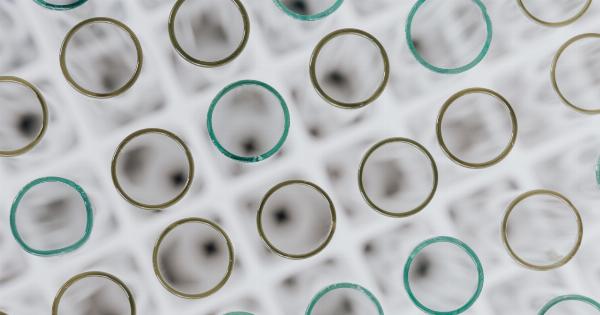Amenorrhea is a condition that affects many women around the world. It is the absence of menstruation in women of reproductive age, and it can be due to many different causes. There are two types of amenorrhea: primary and secondary.
Primary amenorrhea is when a woman has not started menstruating by the age of 16, while secondary amenorrhea is when a woman has previously had regular periods but has stopped menstruating for at least three months.
Causes of Primary Amenorrhea
Primary amenorrhea can be caused by a number of factors, including:.
Genetic and Congenital Causes
Some genetic and congenital conditions can affect a woman’s ability to menstruate. For example, Turner syndrome, a genetic disorder that affects females, can lead to primary amenorrhea.
Other conditions that can cause primary amenorrhea include Mullerian agenesis, which is the failure of the Mullerian ducts to develop properly, and Androgen insensitivity syndrome, which is where the body cannot respond to male hormones properly.
Physical Causes
Physical problems can also lead to primary amenorrhea. Some common physical causes include malnutrition, excessively low body weight, and obesity. Certain medical conditions, such as polycystic ovarian syndrome, can also lead to primary amenorrhea.
Hormonal Causes
Hormonal imbalances can also cause primary amenorrhea. The pituitary gland, which is responsible for producing hormones involved in menstrual regulation, may not function properly.
For example, a deficiency in luteinizing hormone (LH) or follicle-stimulating hormone (FSH) can prevent ovulation and menstruation. A woman may also have an underactive thyroid gland, which can lead to low levels of thyroid hormones and prevent menstruation.
Causes of Secondary Amenorrhea
Secondary amenorrhea can be caused by many different factors, including:.
Pregnancy
Pregnancy is a common cause of secondary amenorrhea. Once a woman becomes pregnant, she stops menstruating until after the baby is born.
Breastfeeding
Breastfeeding can also cause secondary amenorrhea. The hormones involved in milk production can suppress ovulation and menstruation for a period of time.
Physical Causes
Physical causes of secondary amenorrhea include excessive exercise, low body weight, and obesity. Certain medical conditions, such as polycystic ovarian syndrome and thyroid disorders, can also cause secondary amenorrhea.
Emotional and Psychological Causes
Emotional and psychological factors can also contribute to secondary amenorrhea. Stress, depression, and anxiety can all affect the hormonal balance in a woman’s body and lead to menstrual irregularities.
Diagnosing Amenorrhea
If a woman has missed her period for at least three months, she should see her healthcare provider to determine the cause of her amenorrhea.
The healthcare provider will perform a physical exam and ask about the woman’s medical history and recent changes in her life. To diagnose the cause of the amenorrhea, the healthcare provider may recommend additional tests such as:.
Blood Tests
Blood tests can measure hormone levels and detect any imbalances that may be causing the amenorrhea. The healthcare provider may also test for pregnancy or other medical conditions.
Imaging Tests
Imaging tests such as ultrasounds or MRIs can help to identify any structural abnormalities in the reproductive system, such as ovarian cysts or uterine fibroids.
Treatment for Amenorrhea
The treatment for amenorrhea depends on the underlying cause. If the cause is due to medications or lifestyle factors, such as excessive exercise or low body weight, making changes to these factors may help to regulate the menstrual cycle.
If the cause is due to a medical condition or hormonal imbalance, medication or hormone therapy may be necessary. In some cases, surgery may be required to correct any structural abnormalities in the reproductive system.
It is important for women to see their healthcare provider if they experience amenorrhea or any changes in their menstrual cycle. Early diagnosis and treatment can prevent complications and help to maintain a woman’s reproductive health.



























